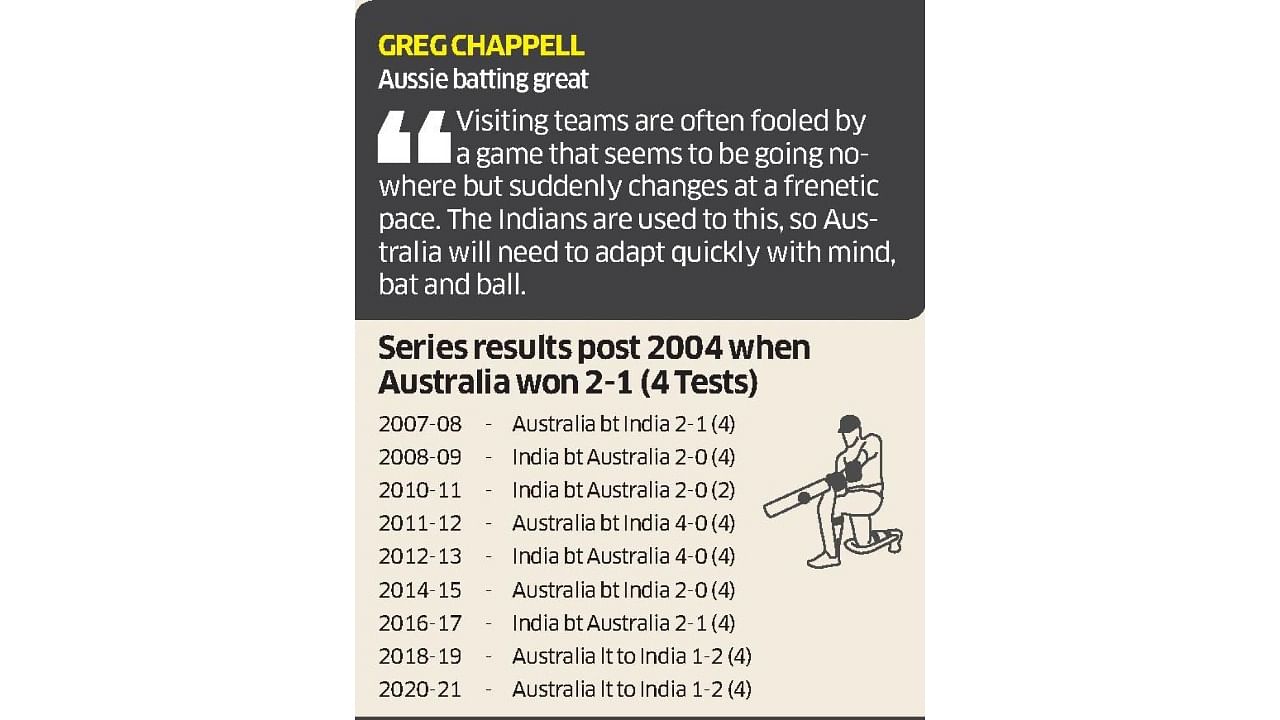

As cricket rivalries go, the Ashes between England and Australia remains the most significant, given its long history and captivating cricket in each series even for a neutral follower. The India-Pakistan duel has the potential to rival the Ashes but the absence of bilateral series due to political volatility between the neighbours makes it a non-contender.
Ironically enough, it’s these tenuous circumstances between the two countries that make the odd white-ball contest a spectacle like no other. It’s no surprise then that Cricket Victoria has expressed interest in hosting a bilateral series between the two feuding nations after their group match in the T20 World Cup last October at the MCG drew over 90,000 spectators.
Also Read: Cummins & Co prepared for the Indian grind
The absence of India-Pakistan Test cricket has been compensated, in a way, by the India-Australia engagement that has grown in stature as one of the biggest rivalries in the game. The drama, controversies, mind games and, above all, the quality of cricket have made this a top-drawer clash. That it will soon upscale to a five-Test series from when the two teams face off Down Under next year merely underlines its pre-eminence in the cricket calendar.
This growth in prominence has been not only because India have been almost impregnable at home for decades, but also because they have beaten Australia in their own backyard on the last two tours. For the first time in nearly two decades, however, Australia threaten to end India’s proud home record. The last time Australia won in India was in 2004, when current head coach Rahul Dravid led in the last two Tests in place of an injured Sourav Ganguly. India lost the Nagpur Test and with that the series, but won a consolatory game in Mumbai on a rank turner.
Talking of turn, the narrative around the series has been loaded in favour of spin. Australia have pulled out all possible stops to give themselves the best chance to counter what they expect will be spin-friendly pitches. They have preferred an intense training camp over a tour match where, they felt, they would be provided with a green top as opposed to a turning track which could be rolled out for a Test. Australia’s apprehension is understandable, as is India’s predicament.
Given their top-order batters’ troubles against the turning ball in recent times, there will be a certain dilemma in the Indian think-tank over laying out spinning tracks. A case in point is the Pune pitch in 2017, when left-arm spinner Steve O’Keefe lured India to their doom on a rank turner with match figures of 12 for 70. With due respect to the current batting lot, it’s no patch on the Class of 2004 when it comes to negotiating the turning ball.
Being part of both set-ups, albeit in different capacities, Dravid will be in the best position to take a call. Besides, one of their primary spinners, Ravindra Jadeja, is coming off a long injury lay-off, and though he did well in the lone Ranji Trophy game he played to prove his match fitness, there will be some apprehension as he hasn’t played a Test since last July in England.
While there is a great chance that a rank turner might backfire, India can’t afford to play on a pace-friendly deck either, for the tourists have a more lethal pace attack, which has a lot of experience of playing in Indian conditions. The absence of Jasprit Bumrah is another factor weighing heavy on India.
"Playing spinners on flat deck isn't the problem. We must admit that our batters have struggled against quality spin bowling on tracks that have offered turn. I don't know what kind of tracks will be in the offing but rank turners could backfire," former India spinner Murali Kartik was quoted as saying by PTI.
While India might still overcome Burmah’s non-availability, they will genuinely miss Rishabh Pant in the middle-order. The injured wicketkeeper-batter has been the most crucial component of India’s batting in the last two years. In six Tests at home since February 2021, Pant has scored 455 runs at an average of 56.87 and at a staggering strike rate of 95.78. Most of these runs have come with India on the backfoot and it’s difficult to replace such a rare combination of solidity and flair, something Indian cricket had not seen since the retirement of Virender Sehwag.
It remains to be seen if India go for Ishan Kishan, who can potentially be a like-for-like replacement, or the more conservative Srikar Bharat. But there’s little doubt about their four top batsmen will be skipper Rohit Sharma, his deputy KL Rahul, former captain Virat Kohli and Cheteshwar Pujara, Player of the Series in India’s last outing in Bangladesh. Both Kohli and Rahul have struggled in red-ball cricket; additionally, their performances last year are a little concerning.
While Kohli managed 126 runs in four Tests in India and Bangladesh, Rahul played just two Tests in the same period for a cumulative score of 57. Rohit had had an impressive 2021-22 season, but since his elevation as full-time Test captain, he has missed more Tests than he has played. Australia know that the top-order is India’s vulnerable spot at the moment and they will look to cut the proverbial head (read the top four) of the snake so that the body crumbles.
That said, Australia often bring the best out of India. Be it home series in 2001-02 and 2016-17, when India rallied in stunning fashion, or their last triumph Down Under in the absence of several first-choice players, there is something about playing the men from the Antipodes that fires up the Indians. Rohit and company will again be looking for that spark that can ignite their campaign.